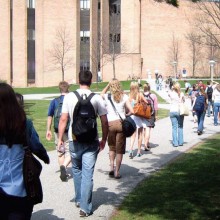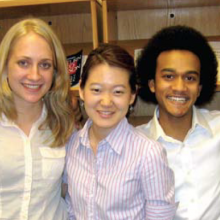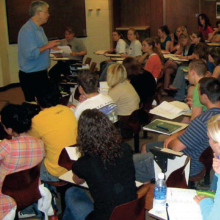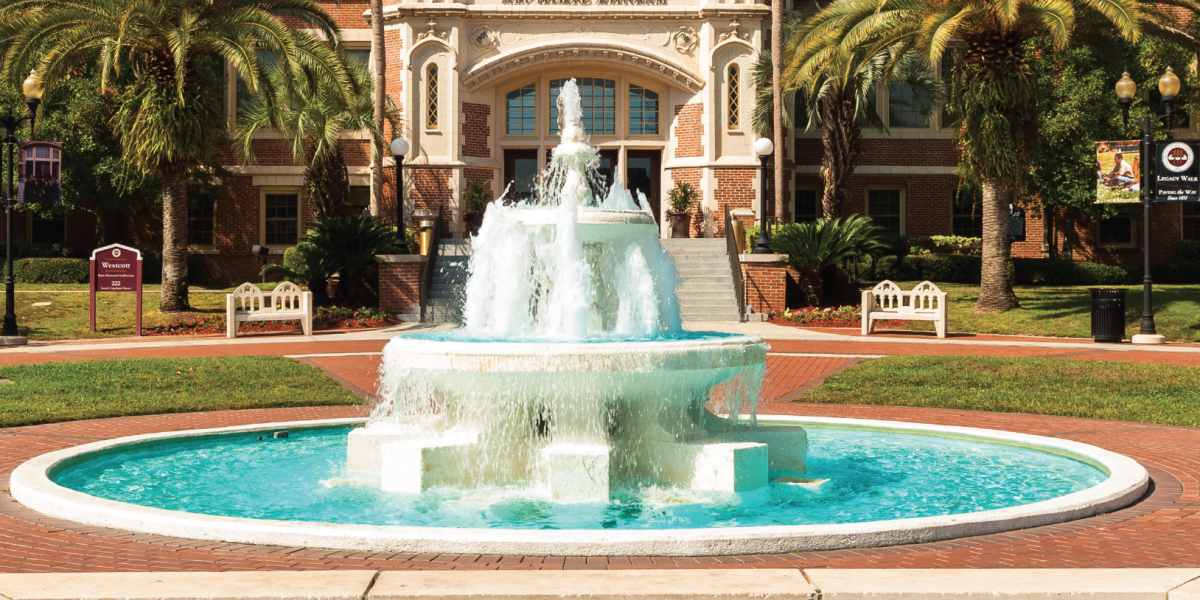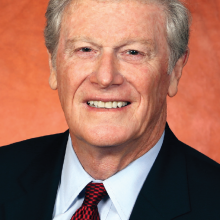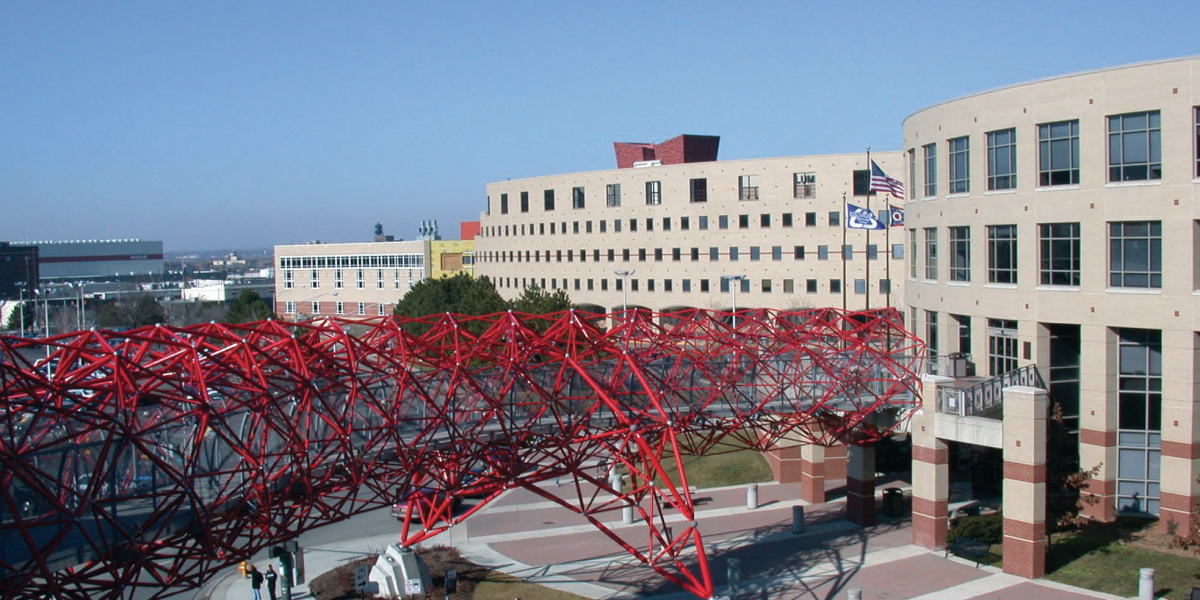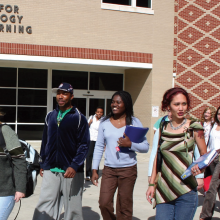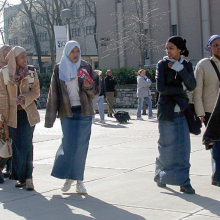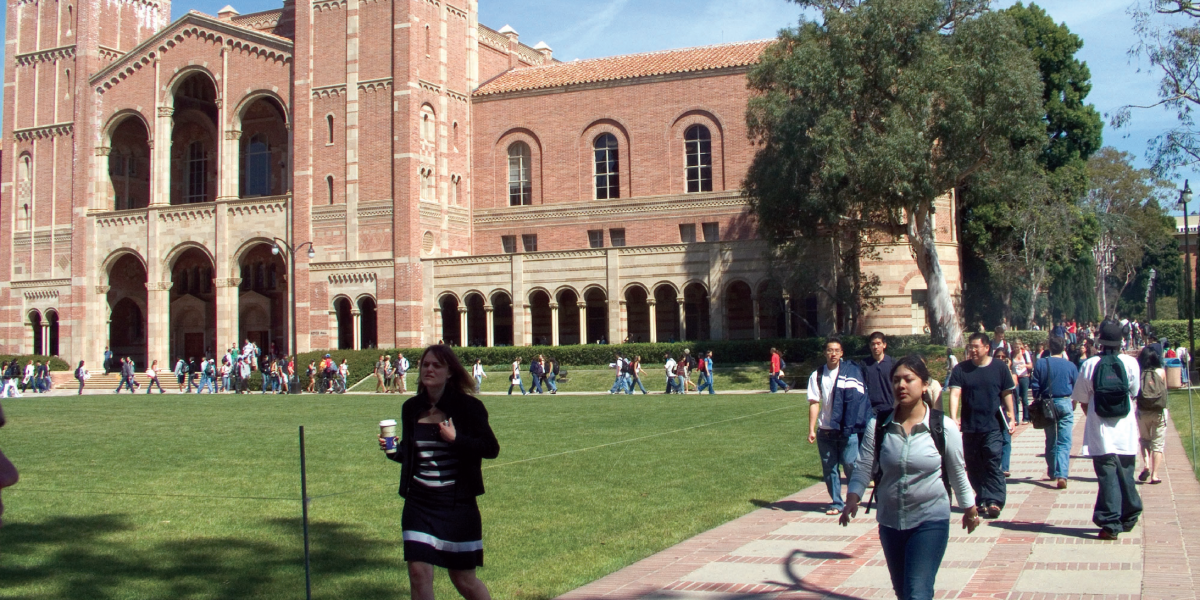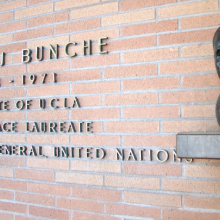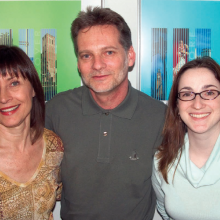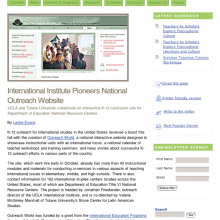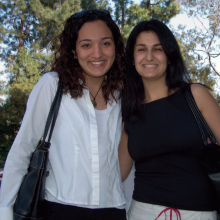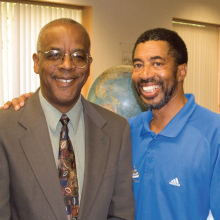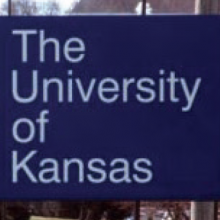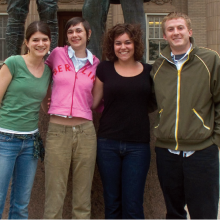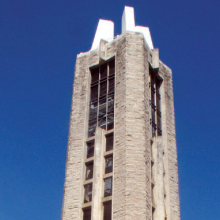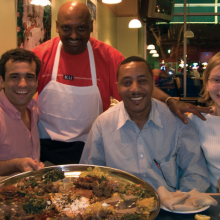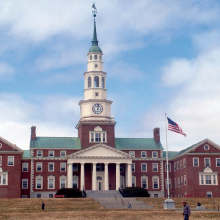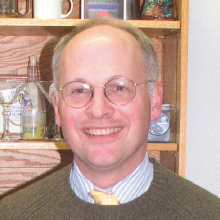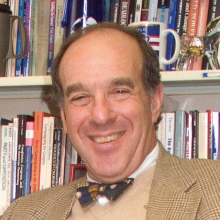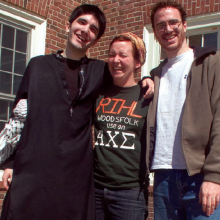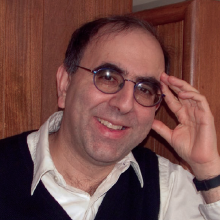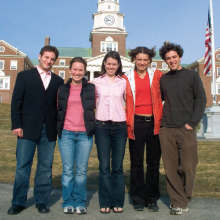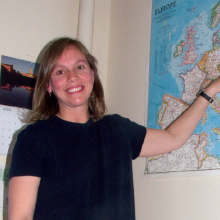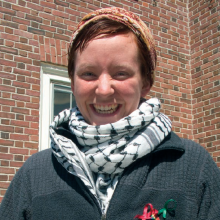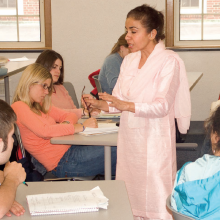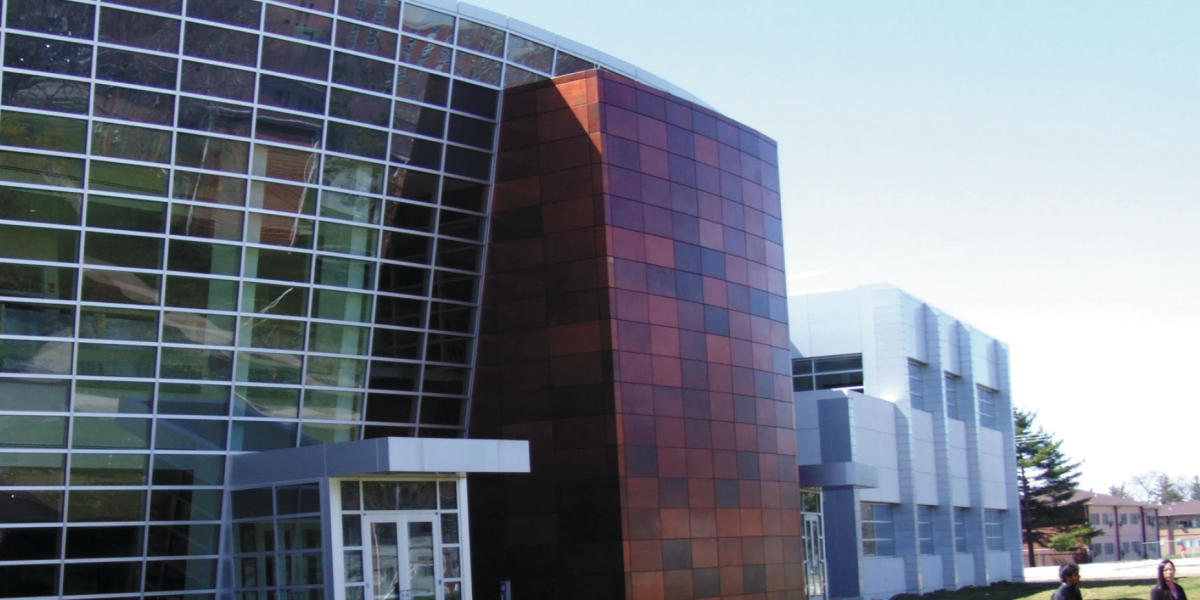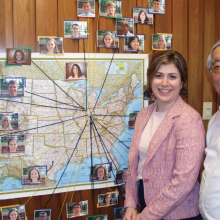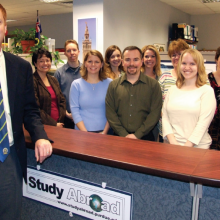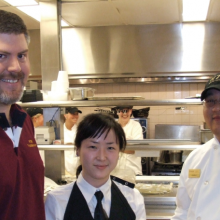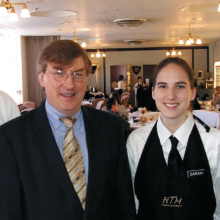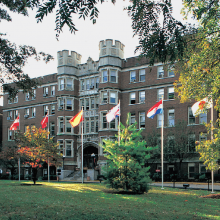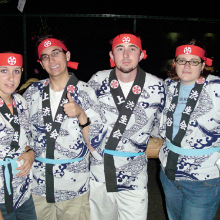2007 Comprehensive Calvin College
The Dutch immigrants who settled in western Michigan in the mid-nineteenth century brought not only their culture and Reformed Protestant faith, but a strong interest in establishing schools to impart their principles and religion to the next generation. “Onze school for onze kinderen (our school for our children) was the operating description of both the college and the Christian day schools that they established,” according to a history of Calvin College in Grand Rapids, Michigan.
Calvin, one of the largest and most academically rigorous Christian colleges, remains firmly in the Christian Reformed fold. But Calvin is no longer onze school for onze kinderen. Fewer than half Calvin’s 4,200 undergraduates belong to the Christian Reformed Church. Ten percent are minorities, and there are more than 320 international students from five dozen countries. The majority of international students receive more than $10,000 a year in financial aid.
As recently as the 1970s, 90 percent of the students came from Christian Reformed high schools in the Grand Rapids area and sister schools in midwestern suburbs, southern California, Canada, and other places where Christian Reformed families clustered. When Ellen B. Monsma came to Calvin to teach French in 1971, “if you looked around the fine arts auditorium, all you’d see was blonde heads.” But, says Monsma, director of Calvin’s Off-Campus Programs, “it’s very different now.”
Ninth in International Students, Fourth in Study Abroad
According to Open Doors 2006 data, compiled by the Institute of International Education, Calvin ranked ninth among baccalaureate institutions in attracting international students, and fourth in sending students to study abroad. Rather than catering to onze kinderen, Calvin has internationalized its faculty and curricula and aggressively expanded ties with scholars, theologians, and institutions in Africa, Asia, and Latin America. In 2006 Calvin launched the Nagel Institute for the Study of World Christianity under former provost Joel A. Carpenter to better understand the growth of Christianity in the developing world. While buildings across campus attest to the college’s Dutch roots—with such names as the Spoelhof College Center, Hekman Library, and Noordewier-VanderWerp Residence Hall—and a chair recently was endowed in Dutch Language and Culture, students from Asia and Africa far outnumber those from the Netherlands and rest of Europe. Fully 74 students had citizenship or roots in South Korea, a country with a large number of Reformed or Presbyterian churches and a vigorous missionary tradition. Home for those Korean students means 17 different countries, from Fiji to India to Germany to the United States to Brazil. Calvin also has become a favored destination for “MKs” or missionary kids—U.S. citizens, Canadians, Filipinos, Koreans, and others raised overseas. Many MKs are supported by scholarships provided by Calvin alumnus Stanley van Reken and wife Harriet through their Christian Missionary Scholarship Foundation. It all adds to the international flavor of the 390-acre campus straddling the East Beltline on the outskirts of Grand Rapids.
Open Admissions but Lots of Merit Scholars
Calvin produces more future Ph.D.s than all but a few dozen liberal arts colleges, according to tallies kept by the National Science Foundation. Calvin enrolled 80 National Merit Scholars in 2006–07, including 29 in the freshman class. But it also admits virtually every applicant. “It’s a very unusual student body,” says President Gaylen J. Byker. Open admissions are “part of who we are.”
Calvin, borrowing language from the Book of Revelation, embarked in 1985 to attract those “from every tribe and language and people and nation.” At the time it had a single off-campus study program in a small town outside Valencia, Spain. Today it runs semester-long, off-campus study programs in Tegucigalpa, Honduras; Beijing, China; Budapest, Hungary; Accra, Ghana; York, England, and Grenoble, France, as well as Valencia. It has added majors in international development, international relations, and Asian studies as well as a minor in African and African diaspora studies. In a 2001 overhaul of the core curriculum, it specified that students must study a non-Western or pre-Renaissance subject to fulfill a global and historical studies requirement. “We call it ‘the long ago or far away requirement,’” Provost Claudia Beversluis says with a smile.
Leaders with Global Resumes
Two alumni with broad international backgrounds were brought in to lead the institution in the mid-1990s: current president Gaylen Byker and Joel Carpenter, provost from 1996-2006. President Byker is a former international lawyer and investment banker with a Ph.D. in international relations who dropped out of Calvin as a freshman in 1966, enlisted in the Army and served as an artillery officer in Vietnam. Byker, son of a Michigan state senator, returned home, wed, started a family and captained the wrestling team at Calvin while carving out an interdisciplinary bachelor’s degree. He earned both a law degree and master’s in world politics from the University of Michigan, clerked for a federal judge, and worked for a Philadelphia law firm before resuming graduate studies.
A mentor at the University of Pennsylvania coaxed him to head to Beirut to help rebuild Lebanon after its civil war. Byker landed on the faculty of the American University of Beirut while his wife Susan taught at an international school, which their 11- and 5-year-old daughters attended. But what was thought in 1982 to be the end of violence in Beirut was just a lull; from five miles away, the Bykers felt the force of the truck bomb that blew up the Marine barracks on Oct. 23, 1983, and killed 241 American and 60 French soldiers. Two months later, Byker was returning to the Middle East from co-teaching a January interim course at Calvin when he learned that Malcolm Kerr, president of the American University of Beirut, had been assassinated. The Bykers were among the Americans evacuated by U.S. Marine helicopter crews from the Beirut beaches in February 1984. The family returned to Beirut in the spring, but Byker later had to be smuggled out of the country after militants began kidnapping male Westerners, including their friend, the Rev. Benjamin Weir, a Presbyterian missionary. Susan Byker, not wanting to disrupt further her Lebanese students’ education, waited until the end of the school year to depart with her daughters.
During those chaotic years in Beirut, Byker managed to complete a survey on the attitudes of Lebanese citizens toward their wildly fluctuating currency. It would be 1993 before Byker completed writing his dissertation. He spent those interim years jetting around the world as an investment banker for Chase Manhattan and Banque Paribas, helping governments and corporations hedge commodity price transactions. Then in 1995 he answered the call to serve as Calvin’s president.
“Part of the challenge here is to keep the very distinctively Christian and Calvinistic or Reformed characteristic of the college, while really opening it up to this global perspective,” says Byker. A tradition of respect for intellectual inquiry made this task easier, notwithstanding strict religious restrictions on who can belong to the faculty, he says. “We expose our students to everything. We bring everybody here to lecture,” says Byker. Rosemary MasonEtter, the international admissions director, puts it, “Calvin seeks to have conversations, not prevent conversations.” The college also hosts a celebrated January Series of lectures that it bills as “15 days of free liberal arts education,” that fills the Fine Arts Center Auditorium at lunchtime for 15 consecutive weekdays. Speakers have included Paul Rusesabagina, the real-life manager of Hotel Rwanda; Dr. Paul Farmer, the founder of Partners in Health; Egyptian scholar and dissident Saad Eddin Ibrahim, and Scott Ritter, former U.N. weapons inspector.
Far From Fundamentalism
Calvin is far from fundamentalist. Kwabena Bediako, 20, a senior chemistry major from Mampong-Akuapem, Ghana, observes, “For the most part the college is not afraid of tackling or confronting issues that are seen as controversial in other Christian colleges. Nothing is too awkward or too controversial to be investigated or be discussed, especially in the sciences.” Bediako’s older brother is a 2004 graduate working on a Ph.D. in immunology and a master’s in public health at Northwestern University. Bediako, a chemistry major, says, “I’m going to have to confront some of these issues at some point in my career. We might as well start to think about them critically now rather than be caught off guard later in life.”
Bediako’s parents, Kwame and Gillian, founders of the Akrofi-Christaller Institute for Theology, Mission and Culture in Ghana, are working with Calvin’s Nagel Institute for the Study of World Christianity. The Nagel Institute recently received a $2 million grant from the John Templeton Foundation to fund a three-year program of scholarship and lectures for Chinese scholars on the intersection of science, philosophy, and belief. The executive director for the project is Kelly J. Clark, a Calvin philosophy professor whose friendship with a Chinese professor he met on sabbatical in Scotland led him to become a student of Chinese philosophy. After an exchange of visits, Clark says he decided that “there were things we had to learn from them, so I devoted myself to the study of Chinese thought.”
Religion professor Diane B. Obenchain, a Harvard-trained expert on Confucianism, came to Calvin to teach world religions in 2005 after long stints at Kenyon College and visiting professorships at Peking University and other Asian institutions. Daniel H. Bays, an authority on the history of Christianity in China, came to Grand Rapids in 2002 after a long career at the University of Kansas, where he chaired the history department and directed the Center for East Asian Studies. Bays secured a $500,000 grant from the National Endowment for the Humanities that Calvin agreed to match 3-to-1 to create a $2 million endowment for Asian Studies. Political science professor Amy S. Patterson, a Peace Corps veteran who wrote her dissertation on grassroots democracy in Senegal, was attracted to Calvin both by its religiosity and the strong interest in international issues. She is the author of The Politics of AIDS in Africa and editor of a second compendium on the AIDS crisis.
President Byker likes to tell visitors that, “There were three Calvin colleges before Calvin College in this country. One was called Harvard, one was called Yale, and the other was called Princeton. They were all founded by Calvinists very much in the exact intellectual tradition within which we exist today.” Of the more than 200 Protestant Christian colleges founded before the Civil War, “zero are Christian today,” he adds. All jettisoned their religious identity and became secular, he states. Calvin began as a Christian Reformed seminary in 1876, opened a junior college in 1906, and became a baccalaureate college in 1921. It remains the principal educational institution of the Christian Reformed Church, which claims a quarter-million members in the United States and Canada.
Looking toward the Global South and East
Carpenter, a historian and authority on evangelical movements, directed the religion program of The Pew Charitable Trusts before he was hired as provost in 1996. Upon returning to his alma mater, Carpenter pushed the college to pay more attention to issues of “the global South and East.” Beversluis, the current provost, says, “he kept telling us, ‘Look, the church isn’t headquartered in Europe and the U.S. anymore. The growth areas, the edge, is in the global South and East, so Calvin College better know where it’s happening. We’d better be on top of things and not graduate students who think that west Michigan is somehow the center of the universe.’” Carpenter says he found a Calvin ready “to break out of its protective ethnic shell.”
Sociologist and Dean for Multicultural Affairs Michelle R. Loyd-Paige has both lived and helped drive change at Calvin, which was far more homogenous when she arrived on campus as a freshman 30 years ago. “We see ourselves as having this unique position of being a credible, Christian, and scholarly voice on these issues. We believe we have something to say to—and to hear from—a wider audience,” says Loyd-Paige, an ordained minister in her African-American church in Muskegon, Michigan.
Nana Yaa Dodi, 23, of Asamankese, Ghana, a business and international relations major, can attest to the attention she received when applying to the college. “I felt like the admissions counselors actually cared about my being able to make it here to Calvin. They were willing to work with me and my parents on finances. At various times, especially when I was receiving so much correspondence and replies to my e-mails, I wondered, ‘Am I the only student applying? These people get back to me really fast.’”
More than 700 Calvin students study abroad each year, 500 on three-week classes during the interim term and upwards of 200 on full-semester programs. Under the leadership of Frank Roberts, a former academic dean and director of Off-Campus Programs, and Monsma, the current director, “we really bootstrapped the semester programs abroad,” Carpenter says. Now the college is scrambling to keep up with the demand. The International Development Studies major requires students to study in a developing country, which explains why Monsma is exploring an arrangement with an institute in Thailand to supplement an existing development program in Honduras (Calvin also runs a language study program in Honduras).
Students can take their full financial aid to study at the Calvin-run programs in Britain, China, France, Ghana, Honduras, Hungary, and Spain, and also at five other Calvin-endorsed programs in Austria, Germany, Greece, Japan, and the Netherlands. They are eligible for half their financial aid if they choose from 16 other Calvin-approved semester programs.
Growing By Finding the International ‘Pioneers’
While Calvin has parlayed its religious interests and connections into a deeper involvement in study and research abroad, Carpenter believes there are lessons to be learned here for any institution seeking to internationalize.
“This sort of thing can bubble up. I’d be amazed to find a campus in the nation where the interest in internationalization is not there,” says the Nagel Institute director. “I’ve seen a lot of post-tenure faculty saying, ‘I’m getting a little bored with the thing that really excited me in graduate school; I’ve ridden this horse long enough. There are some new worlds to discover.’”
“In some ways that is how change happens in a lot of fields. You go with the pioneers first and see if their commitment and enthusiasm can excite the interest of others,” says Carpenter.
One of Calvin’s preeminent international “pioneers” is Roland Hoksbergen, professor of economics and business and the driving force behind the International Development Studies major, which in two years has attracted 85 students. Had such a major existed when Hoksbergen entered Calvin in1971, he might have completed his bachelor’s degree in four years instead of eight. But he dropped out, bought a van, and drove to Alaska. He wasn’t sure what he would do there, but he was intrigued to learn about far-away peoples and cultures. A few years later he wound up doing earthquake relief work in Guatemala and in the process met his wife and found his vocation. “I poked my head out and said, ‘Man, people are poor here. I wonder what’s going on and what can be done about it?’” That led him back to Calvin for a bachelor’s degree and a desire “to understand the economic part of life.” Calvin hired him even before he completed his Ph.D. in economic development at the University of Notre Dame. He took leave to spend three years in Costa Rica as director of the Latin American Studies Program for the Coalition of Christian Colleges and Universities and two years in Nicaragua running the Christian Reformed World Relief Committee’s efforts. He also led Calvin study abroad programs in Ghana in 2002 and in Honduras in 2005.
Another pioneer is Beryl Hugen, director of Calvin’s social work program, who has led several January interims to Russia and Mexico and spends a third of his time teaching at the Russian-American Christian University (RACU) in Moscow, a small liberal arts college affiliated with Calvin and other religious colleges. “It’s easy to get caught up in off-campus study,” says Hugen, a 1971 Calvin graduate. “It’s almost a rite of passage for our students now.”
A Last Minute Switch to Kenya
Calvin offers instruction in Chinese and Japanese as well as Spanish, French, German, and Dutch. Recently, with a $140,000 grant from the U.S. Department of Education to launch its minor in Africa and African Diaspora Studies, it began offering Kiswahili classes, and plans are in the works to teach Korean. Geography professor Johnathan Bascom helped start the African and African Diaspora Studies minor. He is writing a book about Eritrea and had planned to take an interim class there in January 2007 to study its geography. Eight weeks before departure, unrest made that impossible. Bascom quickly regrouped and took the same seven students to Kenya to work in a rural village with a German charity fighting trachoma, a blinding, bacterial eye disease spread by flies. The Calvin students also got to visit a game park and snorkel in the Indian Ocean, but only after spending several days and nights in a remote village of the Sumburu, an ethnic group related to the Maasai. Using handheld Global Position System devices, they mapped the village to help determine the best sites for digging new wells and latrines. Bascom, who has twice taught in Eritrea on Fulbright grants, said the trip was “a deep cultural dive” for his class. Says Sarah Holland, 21, a senior geography major from Grand Rapids, “It was dusty and dirty and fantastic.”
“The GPS work got us beyond merely providing a meaningful cross-cultural experience, which is what the interim is supposed to accomplish. I think we got to the edge of providing an actual contribution,” says Bascom. Pointing to the college’s 52-page blueprint for diversity, racial justice, reconciliation, and cross-cultural engagement, he adds, “I think that the African studies and diaspora minor is part and parcel of this college responding to our own self-subscribed mandate, From Every Nation.”
An Egyptian Student’s Legacy: Rangeela
One of the traditions at Calvin is an annual variety show called Rangeela—the word means “many colors” in Hindi—put on by international students. It was started by a young student from Egypt named Anne Zaki in her freshman year, 1995–96. Zaki, a pastor’s daughter from Cairo, Egypt, came from an international, all-scholarship boarding school for student leaders in Vancouver, Canada. Initially she found the Calvin campus too tame and homogenous for her liking. Her resident adviser and the college chaplain offered words of wisdom.
“They challenged me and said, ‘Look, if you don’t like it, change it. Don’t just up and go. Isn’t that what you learned in your school back (in Vancouver)? You’re supposed to be a leader,” Zaki relates. The 18-year-old conceived the idea for Rangeela, which was a big hit from the start. After graduation, Zaki returned to Cairo for a master’s degree and married a minister who was a graduate of Calvin Theological Seminary. The couple moved back to Grand Rapids, where the Calvin Institute of Christian Worship hired Zaki to give the institute a more global focus. Now she works part-time for the institute and is on the path toward a divinity degree at Calvin Theological Seminary. She takes pride in the growth of Rangeela, which has become such a hot ticket that seats are even sold to dress rehearsals. “I nudged Calvin in a good direction,” says Zaki. “International students are becoming more aware of their own culture. Korean students go back home over Christmas break, visit grandma in the village and ask, ‘Can you teach us a folk dance?’”
Reviewing the 2007 Rangeela, a reporter for the student newspaper, Chimes, griped that an emcee’s accent was “too thick to be understood.” The performers were stung, but perhaps no one was more upset than Linda Bosch, the international student adviser who works closely with students on the production and is revered by them. “She’s like a mother when we arrive,” says senior Jane Cha, 22, a psychology major born in Philadelphia and raised in Beijing by Korean missionary parents.
Bosch says aspects of the variety show were fair game for criticism—including its 2¼-hour length—but not the accent of the host, who hailed from an English-speaking country, Singapore. “Everyone should talk like we do here in Michigan—yeah, right,” she says acidly. But Bosch counseled restraint on those upset by the Chimes review. The following week the newspaper ran several tempered letters of complaint and a 1,300-word Q&A with Bosch—twice as long as the offending review—in which the adviser explained the anguish caused by the review, but also stressed the importance of more communication across cultures, not less. Her advice to future Chimes reviewers? Be more welcoming and hospitable to guests in our country—but don’t patronize them by limiting criticism.
Students at many campuses joke and sometimes fret about living in a “bubble,” and Calvin students are no exception. “I’m always struck by the activist inclination of the students,” says Bruce Berglund, a cultural historian and assistant professor of history. “I’ve had a number of students really eager to go out and save the world.” One of his students—now in graduate school in architecture—designed a community center for a small town in northern India on an internship, and another worked with AIDS orphans in Africa.
Before spending the fall semester in classes in Calvin’s program at Capital Normal University in Beijing, Christi Bylsma, 20, a junior from Holland, Michigan, spent the summer working in a private foster home in a Chinese village. Bylsma, an Asian Studies major, says, “You have to understand the world before you can address its issues. The best thing we can do to make the world a better place is to get out there and get educated. That’s what Calvin is trying to provide for us.”
Following a Study Abroad Class on the Web
When Matthew Kuperus Heun, an associate professor of engineering, and wife Tracy Kuperus, an international development instructor, led students on an interim to South Africa in January 2005, they also pioneered a “web log” that allowed parents, professors, and students back home to follow their progress on their journey across a country that has moved from apartheid to democracy. Heun, a 1989 Calvin alumnus, says, “If I was a parent sending these students halfway around the world, I’d want to know what was going on. The people in Calvin’s IT department thought that would be an interesting experiment, so we did it. We assigned one student for each day we were away to write an entry and upload their pictures. By the time we got home, we had 60 to 70 pages of student-generated content, both written and visual.”
In Calvin’s engineering program, professors such as J. Aubrey Sykes and Edward G. (Ned) Nielsen encourage students to engage with the world through projects and internships. In Sykes’ senior design class, one team of students designed a kit that could pop 50 pounds of amaranth an hour so that African villagers consume more of the puffed, nutritious grain instead of just grinding it into flour. Other teams worked on projects to make a low-cost water purification system, use a Stirling engine to convert solar energy to electricity, and cannibalize the motor and transmission from an old Toyota Tercel to build a rudimentary utility vehicle.
Breaking Taboos
Economics professor Adel S. Abadeer came to Calvin in 1999 after teaching at Tufts and Boston University. Abadeer, once a shot putter on the Egyptian national track team, says, “I’d never even heard of Grand Rapids or Calvin College. Calvin Klein came to mind before Calvin College or John Calvin.” But it has been a happy match for the economist. He welcomes Americans’ growing interest in other cultures. “Many taboos are being broken,” says Abadeer, who grew up in poverty. “We see the Chinese now differently from 50 years ago, not as very poor but as mathematicians. We see the Indians or Russians as chemists or software engineers. As we get to know more about them, we associate better attributes to foreigners.”
Abadeer tells students that people in Egypt and other African countries are no different from people in the United States. “We think, we hope, we fear, we love, we aspire the same as you, but our resource set and our cultural set is different,” he says. People in less developed countries want “your understanding before your second-hand clothes,” he tells them.
“Students are more interested now because there is some compatibility, some rivalry, and even some fear,” he says. “There’s fear of competition, but also hope and hunger to learn more. We used to have problems attracting students to go to Africa, Asia, and Latin America. Now we have problems accommodating students who want to go to those parts of the world.”


